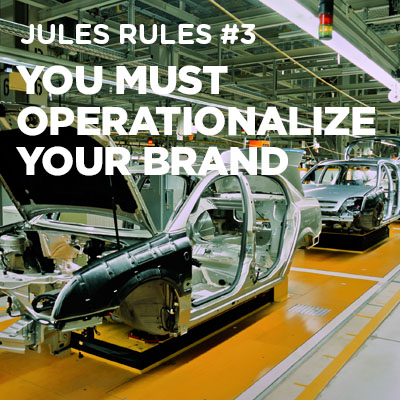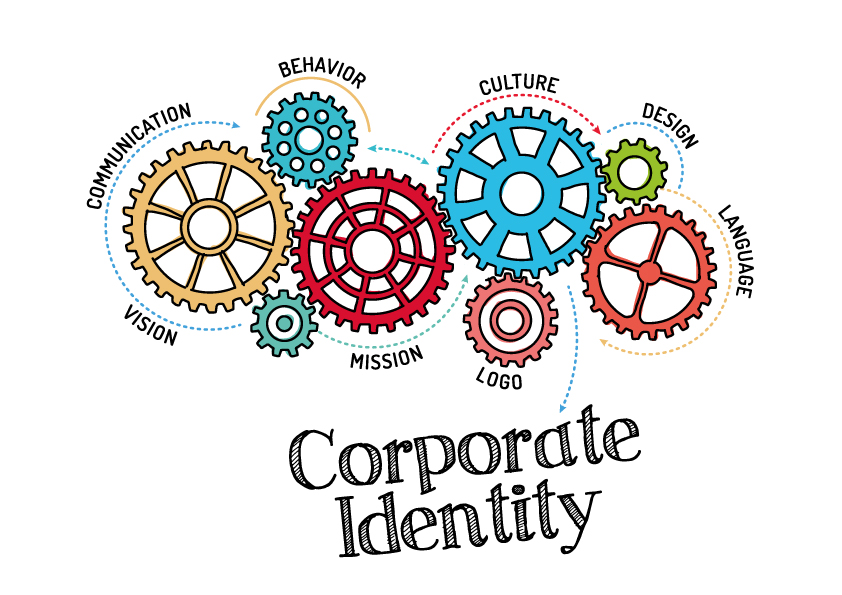Advertising and media have become even more crowded than ever before, and as technology continues to evolve and play a bigger part in the lives of consumers, it will become increasingly complex. Add to that the ramp-up to the 2020 elections and brands, more than ever, will have to figure out how to stand out and maximize the value of their marketing.
The notion of culture is not something most think what discussing the brand, but when you think about it, brands are built by so much more than logos and taglines. Likewise, culture involves so much more than perks and parties. And, somehow strategy becomes the catch all for everything.
Korn Ferry’s Hay Group division has found that the alignment between strategy and culture is more often the exception than the rule. The division’s research found 72% of respondents agreed that culture is extremely important to organizational performance. However, only 32% said their culture aligns with their business strategy. Most likely, this disconnect comes from a view that sees company values as affecting only corporate reputation and employee recruitment.
The growing number of articles examining concepts such as brand purpose and brand culture, has forced companies to reconsider the impact their respective cultures have on the business as a whole. “Culture is no longer seen as an afterthought when considering the business focus of an organization,” said Noah Rabinowitz, senior partner and global head of Hay Group’s Leadership Development Practice. “Culture is the X-factor. It’s the invisible glue that holds an organization together and ultimately makes the difference between whether an organization is able to succeed in the market or not.”
“Culture doesn’t eat strategy for breakfast. It doesn’t eat it for lunch. Culture makes strategy possible.” Like two atomic nuclei in a nuclear reaction, “when fused, your culture and brand create an unmistakable, unbreakable source of sustainable power for your business.” – Denise Lee Yohn
In her book Fusion, brand strategist Denise Lee Yohn introduced me (along with many brand strategy professionals) to the concept of “fusion”. She delves into a different idea of workplace culture – one that is less about benefits and more about creating engaged employees who will work together to produce the results that will be focused on your strategy, ultimately building a great brand.
Yohn notes the lack of brand culture alignment described in the Korn Ferry research as a chicken-or-the-egg problem. “If business leaders don’t see how culture impacts business performance, then they don’t operationalize — that is, put into action and use — their core values throughout the business and, therefore, they don’t see any definitive results from them.”
 As market saturation has made it increasingly difficult for any one company to sustain product leadership over time and to differentiate its brand on product features or performance alone, a definitive brand identity expressed through superior guest experiences can help build long-term guest relationships and maintain higher profit margins. The opportunity is to move from talking about values to embracing them in order to drive brand performance. You must operationalize your brand (Jules Rules #3).
As market saturation has made it increasingly difficult for any one company to sustain product leadership over time and to differentiate its brand on product features or performance alone, a definitive brand identity expressed through superior guest experiences can help build long-term guest relationships and maintain higher profit margins. The opportunity is to move from talking about values to embracing them in order to drive brand performance. You must operationalize your brand (Jules Rules #3).
Yohn states when culture and brand are completely in sync, their alignment is manifested visibly in four primary areas: purpose and values integration, employee experience/guest experience integration, internal brand alignment and employee brand engagement.
VALUES INTEGRATION
The most important question an organization can ask – and answer – is why it exists. Having a purpose can sustain a company even through very dark times. The notion of a brand purpose seems to have become one of the most current buzz phrases, but with good reason. In our competitive environments, we battle daily for the entertainment dollar. As brands, we need to play an irreplaceable role in the lives of our guests. We must live out that purpose so that guests will not be easily lured away by more deliberate competitors. I’ve been in the boardrooms of companies that aspire to be leaders in profitability and yet promise exceptional service. These two concepts (business goal vs brand promise) can become quite disconnected and cause confusion for managers, front-line employees, and, ultimately, guests.
Finding your purpose doesn’t have to be a socially or environmentally-focused exercise (as we see from companies outside of our industry). Your purpose won’t necessarily dull your ability to create higher profits. Finding your purpose can be an examination of the foundation of the company, or undergoing the Five Why’s exercise, or even the Porras and Collins Random Corporate Serial Killer game which challenges you to consider what would be lost if your company ceased to exist and why it is important that it thrive. Once found, codify your company’s higher purpose in a statement that describes the impact you want to be made inside and outside of your company.
EMPLOYEE BRAND EXPERIENCE
I believe the greatest opportunity we have is in the integration of employee and guest experiences. When that is done, the part we seem to struggle with the most – creative and graphic expression – becomes much easier.
Ultimately, you want to create a brand experience for employees, from the way they are hired to the way they are on-boarded and trained to how they do their jobs and interact with guests and with each other. In essence “you engage your employees in the way you expect them to engage your guests,” says Yohn. You must design the employee experience with the same principles you use to design the guest experience, as well as ensure the workplace embodies your brand attributes.
INTERNAL BRAND ALIGNMENT
Internal brand alignment is the process of bringing the brand strategy into focus through employee communication, education and enrollment of your team to refocus efforts on creating positive business results through the delivery of the brand promise to guests at every level of the organization. Properly done, this process and result of everyone sharing a common understanding can be contagious. This is a result of clearly articulating the brand positioning to everyone inside the organization and ensuring stakeholders consistently agree on what is “on brand,” and conversely, what is not.
EMPLOYEE BRAND ENGAGEMENT
People often confuse employee brand engagement with general employee engagement (or commitment to the company or job). Engagement efforts are often a way to make employees feel satisfied with their benefits and environment so that they will be encouraged to do a great job. Employee engagement generally manifests itself in relationships with co-workers, how they view their jobs and careers, and their participation in work activities. These efforts may vary in success, but unless they are intertwined with the brand values, they will not encourage employees to create the type of guest experiences that will advance the brand. When employees are engaged with the brand, they will think and act “on brand.” Employees become your best brand ambassadors because of their belief in the brand promise is deep and emotional. They make decisions by thinking of what’s right for the brand in the long-term rather than choosing what will produce short-term results.
THE STORY BEHIND THE AD CAMPAIGN
This type of true cultural engagement is easily seen in the offices of Airbnb or through the story of Zappos. And, while the casino industry has historically relied on communicating jackpots and easy winning, there is a great example of branded cultural engagement on the Las Vegas Strip (and many regional markets.
With 28 locations and over 77,000 employees, MGM Resorts looked to reposition itself from a casino company to a worldwide entertainment company – a bold move. As the company’s chief experience and marketing officer, Lilian Tomovich saw this as an opportunity for the company to transform itself based on what was, in fact, the core DNA of the company: entertainment. Over years, the company had acquired and developed numerous properties. With those properties came the requisite brand positioning efforts. But the company executives understood the long-term vision could not rely solely on guest-facing communications.
Additionally, they realized they wanted the ability to tell a story to Wall Street AND consumers that could be delivered on consistently. That meant employees had to be engaged in a culture that was aligned with the company brand. Employees needed to be equipped and empowered to deliver on the brand promise.
The MGM Resorts team initiated an internal cultural change effort. Using the metaphor of a SHOW, not only reinforced the company’s brand identity but also came to represent an acronym for the desired culture. The transformation began with a kick-off summit for the 7000 of the company’s leaders, explaining the strategy and showing them how to train in a cascading effort throughout the organization. After eight months, ALL employees were trained through custom sessions spotlighting attitudes and behaviors that were consistent with the desired culture.
An internal communications campaign was launched in conjunction with the initiative that was no less polished and produced as the consumer-facing communications – all designed to generate enthusiasm and reach employees from all angles.
Tomavich found fuel for this transformation in the passion to change employee focus and through the company’s commitment to a continuous conversation regarding the brand-culture connection. It is never an after-thought for the leadership.
When you think about it, we’re all in the experience business. We all work very hard to deliver amazing experiences, but sometimes we miss. When that happens, you need a strong brand culture to win back guests.
Companies that are successful in combining their both culture and brand find the two inextricably woven into the entire organization. When describing the culture and the brand, you will notice a single set of values. Leaders will act and make decisions in a consistent manner. But, more importantly, the difference between what the company claims in its communications and how employees live out the culture is very small. The bottom line is that the company has differentiated itself in a way that creates value.
If you’re a marketing leader, I challenge you to take the next step in your brand development today. Fusing your brand and culture cannot be delegated to Human Resources or Marketing. You are the champion for your brand.


Recent Comments